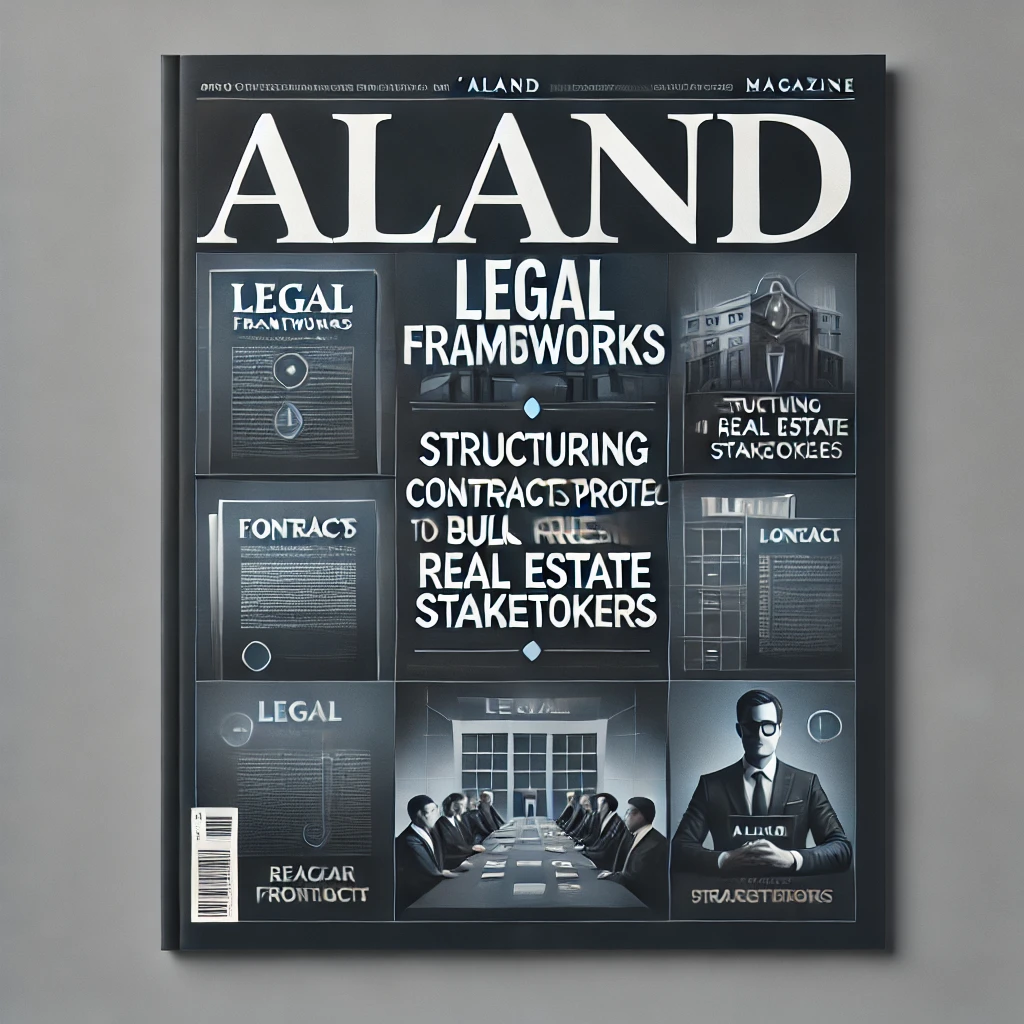Legal Frameworks: Structuring Contracts to Protect Bulk Real Estate Stakeholders
- Published Date: 11th Mar, 2025
-
5★ ★ ★ ★ ★(165)

When structuring contracts for bulk real estate stakeholders, it’s essential to craft legal frameworks that protect the interests of all parties involved while ensuring smooth, sustainable operations. Whether in commercial or residential sectors, bulk stakeholders, such as developers, investors, or institutional clients, require robust contracts that minimize risks and maximize returns. From ensuring compliance with local regulations to integrating innovative solutions that support long-term goals, crafting these frameworks demands both legal precision and strategic foresight.
Key Legal Considerations in Bulk Real Estate Contracts
Real estate contracts involving multiple stakeholders require a careful approach to address various risks—financial, legal, and operational. These agreements must be designed to foster trust, ensure accountability, and offer legal protection to all parties, especially in high-value or high-volume transactions.
1. Clear Definitions and Roles
In bulk real estate projects, one of the first considerations is ensuring that all stakeholders are clearly defined in the contract. Roles should be well-articulated, specifying who is responsible for what. Whether it's the developer, investor, tenant, or third-party contractors, outlining each party’s responsibilities, deliverables, and liabilities ensures that there is no ambiguity about who holds what stake in the project. This clarity serves as the foundation for all subsequent terms and conditions.
2. Escrow and Payment Structures
One of the key risks for bulk real estate stakeholders is the management of payments. Payment structures should be designed to protect investors and stakeholders from delays or defaults. The use of escrow accounts, where payments are held in trust until certain milestones are met, is an effective way to ensure that funds are released only when contractual obligations are satisfied. By linking payments to clear deliverables—such as the completion of construction phases or tenant occupancy—contractual performance is incentivized, reducing the risk of project delays or underperformance.
3. Dispute Resolution Mechanisms
When working with multiple parties, disputes are inevitable. It’s essential that the contract includes provisions for dispute resolution mechanisms, such as arbitration or mediation, which are faster and more cost-effective than traditional litigation. Specifying a neutral third party, governing jurisdiction, and procedures for resolving conflicts ensures that any issues arising during the lifecycle of the project can be addressed quickly and fairly.
4. Compliance with Local and International Laws
Ensuring compliance with legal and regulatory frameworks is one of the most critical aspects of any real estate contract. Bulk real estate transactions often involve multiple jurisdictions, especially if investors are international. As a Swiss economist with experience navigating global economic landscapes, I recommend tailoring contracts to not only comply with local real estate laws but also to incorporate international regulations that could affect the project. This includes zoning laws, tax implications, anti-money laundering regulations, and investment restrictions. Failure to comply with these can lead to costly fines or legal battles.
5. Force Majeure and Contingency Clauses
No real estate project is immune to external factors, such as natural disasters, political upheaval, or economic recessions. Force majeure clauses are essential in protecting stakeholders from unforeseen events that could delay or derail the project. These clauses outline which events qualify as force majeure, how they affect contractual timelines, and what recourse stakeholders have if such events occur. Additionally, contingency clauses provide a buffer for unforeseen circumstances, offering protection against financial losses or project delays caused by factors outside the parties' control.
Leveraging Technology to Strengthen Contracts
Technology plays a pivotal role in the modern real estate landscape, particularly in contract structuring. The use of blockchain technology can provide greater transparency and security in real estate transactions. By embedding blockchain in real estate contracts, developers and investors can create immutable records of all transactions, ensuring transparency and reducing fraud risks.
Additionally, AI-driven tools help streamline contract management and monitoring. These tools can automatically track compliance with contract terms, flagging potential issues before they become major problems. For example, AI can monitor payment schedules, track milestones, and ensure that every party is fulfilling their contractual obligations in real-time, providing instant feedback to stakeholders.
Practical Takeaways for Corporations and Stakeholders
For companies involved in bulk real estate transactions, focusing on the following practical considerations will help create stronger, more protective legal frameworks:
- Ensure Comprehensive Contract Clauses: Cover every detail of the agreement, from roles and responsibilities to payment terms and dispute resolution procedures.
- Use Escrow and Payment Safeguards: Implement escrow accounts and payment triggers tied to project milestones to ensure financial security and accountability.
- Leverage Technology for Transparency: Integrate blockchain and AI-based contract management tools to enhance transparency, minimize risk, and streamline operations.
- Plan for Disruptions: Include force majeure and contingency clauses to account for unforeseen events, providing protection for all stakeholders.

